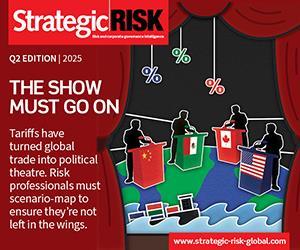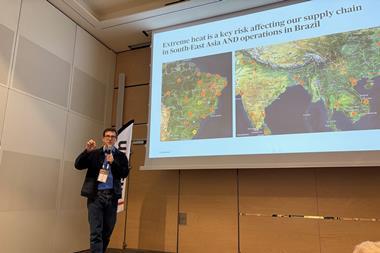A pragmatic solution to one of the most challenging risk management topics facing boards

One of the key governance and oversight challenges facing boards is to ensure that corporate decision-making is in line with the expectations of shareholders, the wider stakeholder community, and the commitments made by management. However, in many organisations the parameters governing risk-return trade-offs are not clearly defined and, given the complexity facing most companies, an intuitive or rule of thumb approach is unlikely to provide optimal results.
Risk appetite is certainly one steering mechanism that can help address this issue by providing a structured way of articulating (and making explicit) the risk-return trade-offs that organisations are willing to make to achieve their strategic, commercial and financial objectives. It can also provide a mandate from the board to exco that defines the parameters that the board would expect exco to operate within.
Boards that do not have a clearly articulated risk appetite statement or framework are right to be concerned from a decision-making, governance and oversight and compliance perspective. As such chairmen, heads of audit/risk committees and senior independent directors (SIDs) should take a lead in ensuring that the risk appetite discussion is firmly on the board agenda.
In discussions with senior board members, it transpires that the risk appetite process is not always structured in such a way that:
● The process creates alignment between the various board members, be that executive or non-executive directors;
● The outcomes from the process make it easier to evaluate individual (and sometimes) competing calls for capital, be that for external or internal initiatives/transactions;
● There is a clear perception by the board that developing the risk appetite statement has been time well spent.
However, can alignment be created when there is a potential inherent conflict between the risk appetite of executive directors and the non-executive directors (NEDs)?
A good risk appetite discussion should, by its very nature, allow the board to address some challenging questions that otherwise tend to be addressed individually rather than holistically:
● Is our risk appetite incorporating the right risks (key source being principal risks)?
● What risks are meaningful/value adding to include in a risk appetite statement?
● Does the risk appetite that we express reflect the commercial objectives of the firm and the expectations of the investors (risk appetite can be too low as well as too high)?
● Is the risk appetite articulated as a risk reduction target or as risk-return trade-offs?
● Does the overall risk appetite allow the firm to meet the expectations of shareholders and the commitments made by management?
The process design should therefore reflect that NEDs and exco members on the board (typically the CEO and CFO) might have divergent perspectives on the desired and/or appropriate risk-return trade-offs to meet the agreed objectives. However, the design of the process should allow the board to surface these differences, where they exist, and to facilitate the board in arriving at an agreed position, and a clear way forward. Equally the process should demonstrate to exco that a well-considered risk appetite framework can generate opportunities to take more risk (in a controlled way) to achieve objectives – this can often be a welcome surprise for senior management. It should also surface any areas where the NEDs have a higher risk appetite than exco anticipates – this could be in areas such as for example, HR (bringing talent through to leadership positions), accelerating implementation of strategic and operational improvement initiatives.
HOW CAN BOARDS GET TO THIS POINT?
It has proven valuable to find the right balance between analysis and process. Clearly, the framework used for the consideration of risk appetite needs to be robust and allow clear articulation of where the organisation sits on a spectrum from risk averse to risk tolerant. However, making the framework or the analytical underpinning too technical might be detrimental to the buy-in to the outcomes, as well as the application of risk appetite in decision-making and oversight. Hence, the design of the process is of critical importance and needs to incorporate both engagement and application.
Recent project experience supports the importance of these factors and has also highlighted the value of the interaction with individual board members in advance of the plenary discussion with the board.
Interestingly, a thorough examination of the risk landscape is an integral part of this. In other words, do we have a comprehensive list of principal risks or are there other risk dimensions that should be considered from a risk appetite perspective? Also, the framing of the discussion benefits from being focused on value, meaning that the risk-return trade-offs are discussed in the context of value creation and protection – not compliance!
However, assuming that you have successfully negotiated the risk appetite discussion with the board, how can the organisation ensure it maximises value from the investment of valuable board time, the preparation and the ensuing outputs. This could include:
● Making sure risk appetite is fully integrated with the workings of the board;
● Using the expressed risk appetite to evaluate key business decisions, e.g. Capex, M&A, sourcing change, new market entry, product launch/ redesign;
● Encouraging exco to use risk appetite as a tool in its deliberations – both to test business cases put forward by the business and in terms of the decision/transactions being put forward to the board.
In summary, success is achieved by:
1. Making the risk appetite process value adding both for the board and exco;
● Finding the right balance between the risk appetite articulation (or calculation) being rigorous and practical/pragmatic;
● Creating a clear link between ‘process’ and how the outputs will be used to add value to decision making;
● Ensure that the chairman, audit committee chair and SID are bought in and have a stake in the outcome;
● Bring CEO and CFO on-board from day one – they do not want to feel that the risk appetite is a straitjacket that is being imposed on them.
2. Be clear on what risk appetite is there to deliver;
● Risk appetite is NOT a mechanism to reduce risk/limit the ability of management to run the business;
● Risk appetite is a management tool that can be used effectively for decision-making but also to increase the cost-effectiveness of governance and oversight;
● Risk appetite can, and should be, cascaded to the level of the organisations where the decisions are being made.
3. Make the trade-offs and linkages explicit;
● There is a cost to risk aversion – the corollary is that your investment in mitigation and control need to be higher where you are risk averse;
● Risk appetite is an integral part of the strategy discussion and should have close links with the board’s strategy considerations;
● Strategy/strategic options can be evaluated more effectively with a clear appreciation of the risk appetite.





















No comments yet